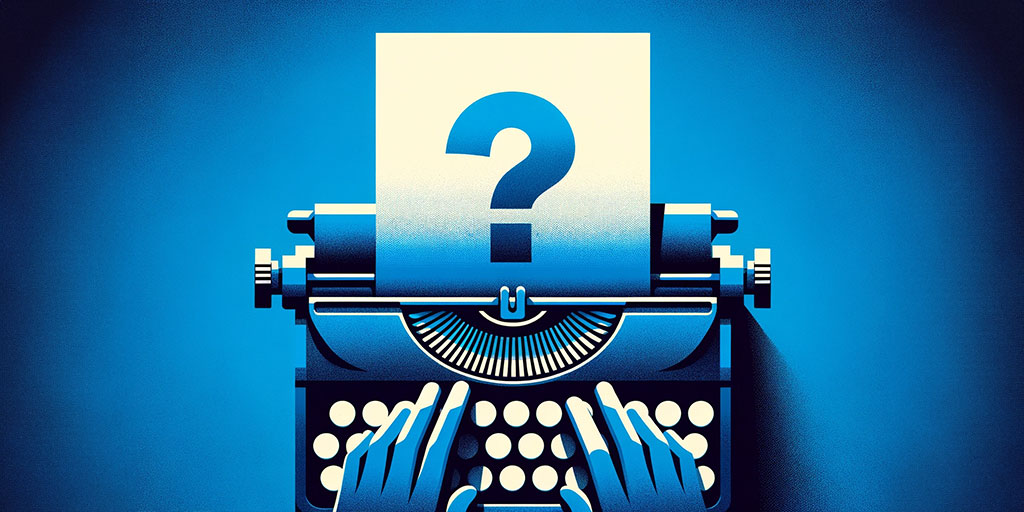Ah, the colorful world of writing! Ever stumbled upon a passage so rich, so ornate, it felt like wading through a pool of lavender? Was it beautifully poetic or just plain…overboard? This might have been your brush with the intriguing concept of “Purple Prose.” Let’s dive deep into this vibrant pool and discover what lies beneath its surface.
What Is Purple Prose? (Definition)
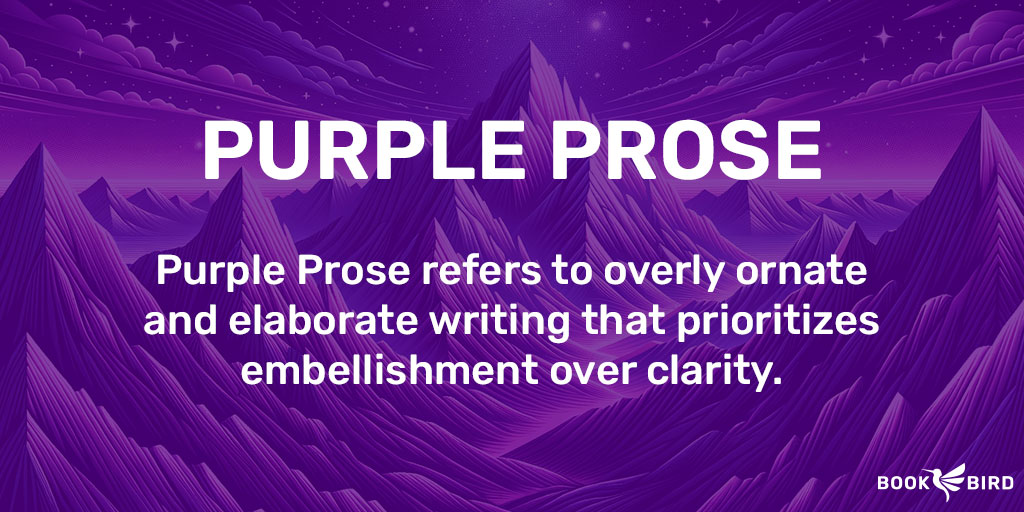
Purple Prose” might sound like a fancy name for a new book genre or perhaps a writer’s club. But in reality, it’s a term that’s been around for quite a while in the literary world. Purple Prose refers to writing that’s extremely ornate, flowery, and overly elaborate. Imagine an author dressing up their sentences with too much jewelry, to the point where it’s more about the bling and less about the substance.
It’s like that chef who adds one too many spices to the dish. Sure, each spice has its own charm, but mix them all, and you might just get an overwhelming taste that overshadows the main ingredient. Similarly, in Purple Prose, the core message or story can often be buried beneath layers and layers of excessive descriptors and metaphors.
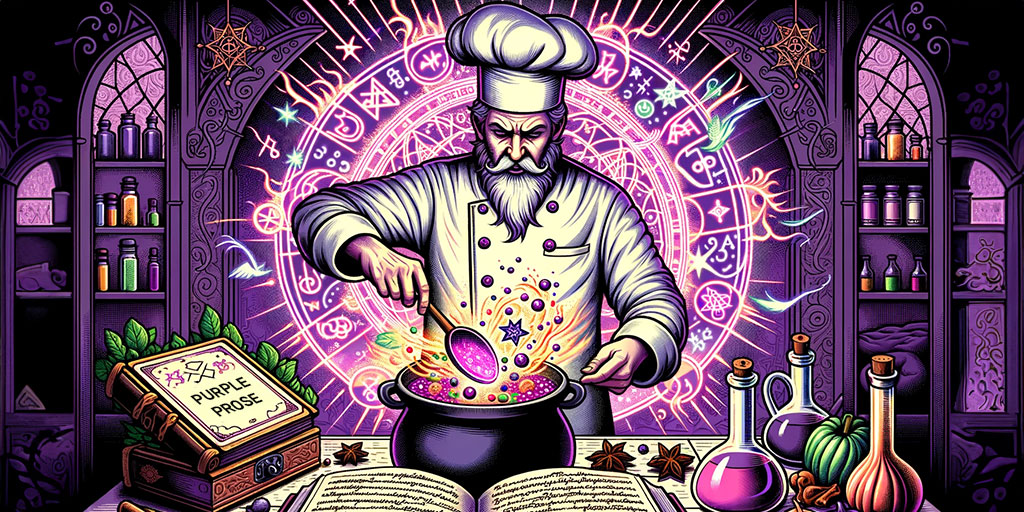
Ever heard the phrase “Less is more”? In the case of Purple Prose, it’s the exact opposite: More is… well, just too much.
But, why is it called “purple”? Legend has it that the term comes from a Latin phrase “purpureus pannus,” which means “purple patch.” This was used in the ancient times to denote a section of writing that seemed stitched into a work, standing out due to its luxurious (and often excessive) nature. Over time, this idea was adopted into the English lexicon, giving us the term we now know and…ponder over.
Craft of Writing Quiz (Easy)

Purple Prose vs. Descriptive Writing

At first glance, Purple Prose and descriptive writing might seem like identical twins. Both aim to paint a vivid picture, to bring words to life, to, essentially, give your imagination a vivid splash of colors. But, are they really the same? Or is there a fine line separating the two? Let’s break it down.
1. The Purpose
- Descriptive Writing: Its main goal is to describe. Shocking, right? It’s all about creating a clear, vivid picture in the reader’s mind. Think of it as giving directions using landmarks. “Turn left at the big red barn, then right at the old oak tree.” It helps the reader navigate the story.
- Purple Prose: The purpose here is often less about guiding and more about showcasing. It’s not just about the big red barn, but the “gigantic, towering barn painted in a shade of crimson reminiscent of a sunset after a stormy day.”
2. The Feel
- Descriptive Writing: It feels natural, like a gentle stream flowing through the narrative. It doesn’t pull you out of the story; instead, it immerses you deeper.
- Purple Prose: Reading Purple Prose can feel like riding on a rollercoaster of adjectives and adverbs. Sometimes, it’s thrilling. Other times, it’s nauseating. And occasionally, it leaves you wondering, “What just happened?”
3. The Balance
- Descriptive Writing: Strikes a balance between detail and brevity. It’s like a chef who knows just the right amount of salt to sprinkle on a dish.
- Purple Prose: Often tips the balance. Remember our over-enthusiastic chef? It’s like adding a dash of every spice in the cabinet. Sure, it’s flavorful, but is it palatable?
4. The Aftertaste
- Descriptive Writing: Leaves you with a clear image, a snapshot you can revisit as the story progresses. It’s the taste of your favorite comfort food, warm and lingering.
- Purple Prose: It might leave you in awe, thinking, “Wow, that was intense.” Or, it might leave you reaching for a dictionary. Either way, it’s more of an acquired taste.
In essence, while both Purple Prose and descriptive writing aim to embellish and enrich a narrative, the degree and intent can vary drastically. It’s like comparing a bedazzled, jewel-studded jacket to a classic, well-tailored suit. Both have their moments and audiences, but knowing when to wear which—that’s the real art.
10 Purple Prose Examples

Aha! Nothing like diving into the literature world and extracting some of the purplest passages ever written. These examples, from renowned novels and lesser-known works, will give you a clearer picture of what we’re talking about. So, without further ado, let’s set forth on this violet voyage.
1. “Paul Clifford” by Edward Bulwer-Lytton
“It was a dark and stormy night; the rain fell in torrents, except at occasional intervals, when it was checked by a violent gust of wind which swept up the streets…”
2. “Fifty Shades of Grey” by E. L. James
“His voice is warm and husky like dark melted chocolate fudge caramel… or something.”
3. “Moby Dick” by Herman Melville
“There is a wisdom that is woe; but there is a woe that is madness.”
4. “The Pilot’s Wife” by Anita Shreve
“The sky is a bruised purple, the tumbled sea an inky blue. It is as if the colors have been washed in black and have faded.”
5. “Twilight” by Stephenie Meyer
“His fingers were ice-cold, like I’d expected, but they had the gentlest touch. Like snowflakes.”
6. “Postmortem” by Patricia Cornwell
“The sun was a wrathful eye that stared down from the sky with a blinding brilliance…”
7. “The Da Vinci Code” by Dan Brown
“The moonlight shimmered through the trees, casting eerie, dancing shadows on the floor below.”
8. “Atlas Shrugged” by Ayn Rand
“The clouds were a thin net stretched over the sky, as if it had been slashed by some giant blade, and a few strips of bright blue had been caught in the mesh.”
9. “Anne of Green Gables” by Lucy Maud Montgomery
“October was a beautiful month at Green Gables when the birches in the hollow turned as golden as sunshine and the maples behind the orchard were royal crimson and the wild cherry trees along the lane put on the loveliest shades of dark red and bronzy green…”
10. “Far from the Madding Crowd” by Thomas Hardy
“The evening sun, already low in the west, was burnishing it a brightness resembling the bright side of a new shilling.”
These samples showcase the wide array of shades in Purple Prose. From the subtly tinted to the deeply dyed, literature offers a spectrum. But is this vibrant style all roses and no thorns? Let’s explore the pros and cons up next!
Pros and Cons of Purple Prose
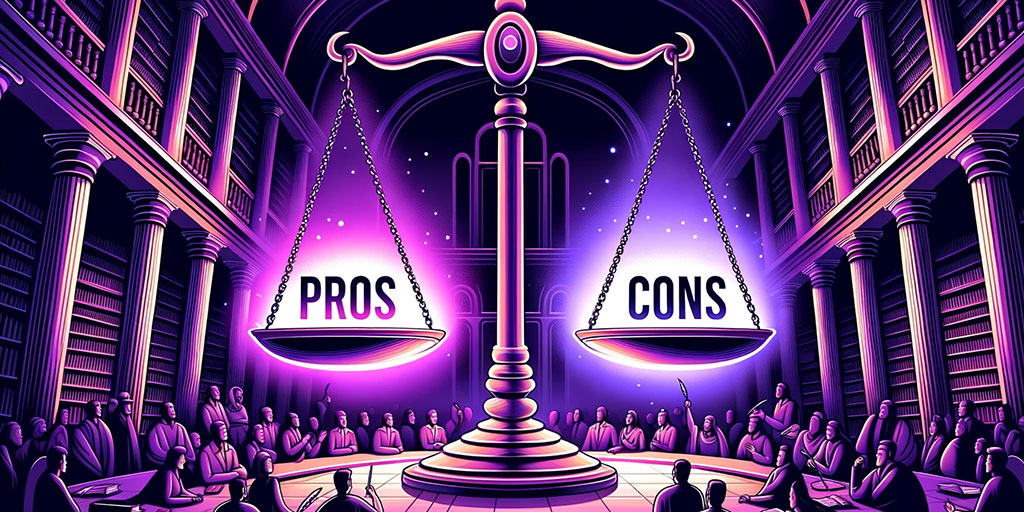
Much like any writing style, Purple Prose comes with its own set of admirers and critics. Some consider it an art form, a tribute to the beauty of language, while others see it as an unnecessary fluff that clouds the real message. But, as we always say, every coin has two sides. So, let’s weigh the shimmering pros against the shadowy cons of this colorful style.
5 Pros of Purple Prose:
- Vivid Imagery: Purple Prose paints a picture so detailed and lush that readers can easily visualize the scene. “The crimson sun sinking beneath the azure horizon, casting a lilac hue across the sky.” Feel the colors?
- Emotional Depth: By diving deep into descriptions, the prose can evoke strong emotions. A simple “She cried” could turn into “Tears, like a torrential downpour, cascaded down her cheeks, reflecting the storm raging within her.”
- Artistic Expression: It offers writers a canvas to showcase their mastery over language. Crafted meticulously, it can be a joy to read, like savoring a gourmet meal.
- Memorable Passages: Those who appreciate the artistry of words will likely remember and even quote overly descriptive passages.
- Creates Atmosphere: In genres like Gothic fiction or Romantic literature, the ornate descriptions help set the mood and tone, amplifying the story’s atmosphere.
5 Cons of Purple Prose:
- Overwhelming: Too many adjectives, adverbs, and metaphors can make the writing dense, causing readers to lose track or interest.
- Distracting: Instead of complementing the narrative, it can overshadow the core story, leading readers astray.
- Pretentiousness: If not done right, it can come off as showy or pompous, as though the writer is trying too hard.
- Slows Down Pace: In genres like thrillers or action-packed adventures, excessive descriptions can hinder the story’s momentum.
- Ambiguity: While aiming for depth, writers might end up creating confusing passages where the real meaning gets lost in a sea of flowery words.
10 Tips for Avoiding Purple Prose

So, you’re a budding writer or maybe an established one, and you’ve faced the siren call of Purple Prose. It’s alluring, we know! But fear not, for we come bearing a roadmap to navigate its treacherous waters. If you’re ever worried about slipping into the deep end of descriptive deluge, here’s your life jacket: a set of tips to keep your prose clear, crisp, and captivating.
1. Prioritize Clarity
Always prioritize clarity over complexity. While it’s tempting to showcase your vocabulary, remember that the primary purpose of any piece of writing is communication. If a reader struggles to understand your message, it’s time to re-evaluate.
2. Read Aloud
This tip might sound old-school, but trust us, it works wonders. When you read your work aloud, you’ll naturally catch sections that sound too flowery or convoluted. If you stumble or get lost in your own sentences, it’s a clear sign something needs tweaking.
3. Limit Adjectives and Adverbs
While these descriptive words have their place, using them excessively can be a direct ticket to Purple Prose-ville. Strive for precision. Instead of “The incredibly fast, amazingly agile cheetah”, consider “The swift cheetah”.
4. Simplify, then Beautify
First, lay down the foundation of your story or message. Once the basics are in place, sprinkle in descriptions where they naturally fit. This method ensures your narrative remains strong, and the embellishments enhance rather than overshadow.
5. Show, Don’t Tell (But Not Too Much)
“Show, don’t tell” is Writing 101. However, it’s possible to overdo it. For instance, instead of saying “he was angry,” you might describe his clenched fists or narrowed eyes. But there’s no need to go on about the shade of red his face turned or the exact angle his eyebrows furrowed.
6. Seek Feedback
Another pair of eyes can be a game-changer. Share your work with peers, beta readers, or writing groups. If multiple people flag a section as too wordy or complex, they’re probably onto something.
7. Edit with a Fresh Mind
After finishing your draft, take a break—be it a few hours, days, or even weeks. Returning with a fresh perspective will help you spot areas that might lean towards the purple side.
8. Study Stripped-Down Prose
Reading is a writer’s best tool. Delve into works known for their straightforward style, like Ernest Hemingway or Cormac McCarthy. Analyze how they convey deep emotions or paint vivid pictures using minimalistic prose.
9. Remember Your Audience
Adjust your style based on your target readership. A poetic novel might welcome more ornate descriptions than a fast-paced thriller.
10. Practice Makes Perfect
Like any skill, avoiding Purple Prose gets easier with practice. The more you write, the more you’ll develop an instinct for when you’re veering into overly descriptive territory.
How to Use Purple Prose Effectively
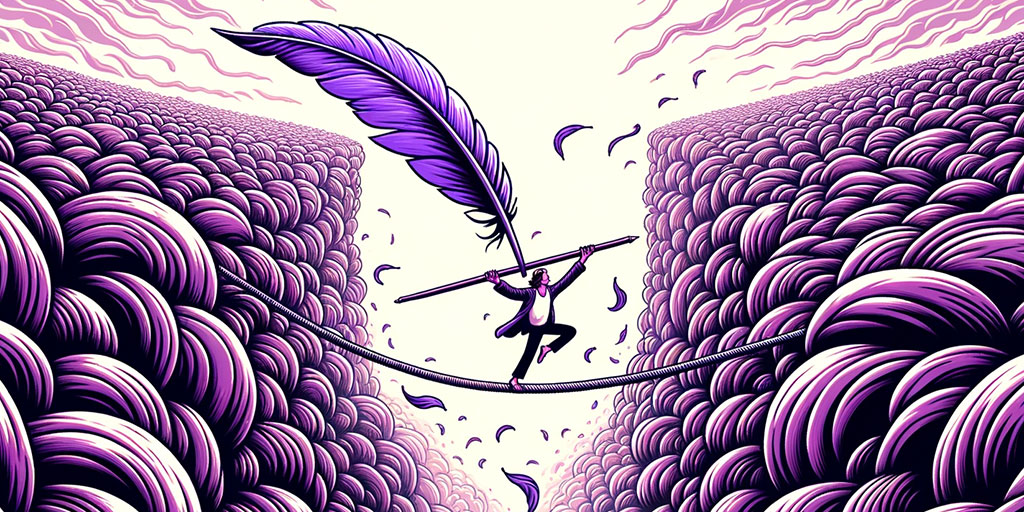
Ah, the twist in our tale! While we’ve chatted at length about avoiding the labyrinth of Purple Prose, is there ever a moment when wandering its maze might be… well, wonderful? Indeed, like salt in a dish, a touch of purple, when used judiciously, can transform a good read into a gourmet feast. Let’s find out how to wield this style without letting it wield you.
1. Set the Mood with Atmosphere
In gothic novels, romance sagas, or epic fantasies, a more ornate style can amplify the atmosphere. The key is to weave in rich descriptions only where they enhance the scene, evoking the exact emotion you’re aiming for. Imagine describing a haunting mansion or a magical moonlit night.
2. Character Voice and Perspective
If you’re writing from a character’s perspective who is poetic, dreamy, or verbose, using Purple Prose can be fitting. It can give readers an authentic glimpse into their inner world. Think about how a poet would view a sunset versus a soldier.
3. Embrace it for Poetic Passages
If you’re penning a poem, song, or a character’s dream sequence, delve into the purple without fear. These sections are meant to be ethereal, and a richer style might be just what they need.
4. Use Sparingly as a Contrast
If your narrative is generally crisp and straightforward, an occasional lush description can stand out, emphasizing a particular moment or setting.
5. Play with Pacing
In fast-paced scenes, you’d want to avoid lengthy descriptions. However, in slower, introspective moments, you might have the liberty to dwell a little longer on the details.
8. Celebrate Your Unique Voice
At the end of the day, every writer has a unique voice. If yours leans towards the descriptive, embrace it while ensuring it serves the story. Remember, some of the most beloved classics are teeming with Purple Prose, and they’re adored for it!
Frequently Asked Questions
Diving into the world of writing, we often encounter curious terms and colorful phrases. Let’s tackle some of the most common queries that pop up when discussing Purple Prose.
Why is It Called “Purple Prose”?
The term “Purple Prose” comes from the Latin phrase ‘purpureus pannus,’ which translates to “purple patch.” In ancient times, purple fabric was pricey, and it stood out distinctly when used in clothing. Similarly, Purple Prose stands out in writing due to its ornate and overly elaborate nature.
How Can I Identify Purple Prose?
Purple Prose is typically characterized by excessive adjectives, metaphors, similes, and adverbs. It’s that part of the text that feels overwritten, trying too hard to impress rather than convey a clear message. If a passage makes you think, “This feels a bit much,” it’s probably leaning purple.
What is the Difference Between Prose and Purple Prose?
Prose is a form of language that possesses ordinary syntax and natural speech rather than rhythmic structure, like in poetry. Purple Prose, on the other hand, refers specifically to prose that’s overly ornate and decorative, bordering on the excessive.
How Does Purple Prose Differ From Poetic Writing?
While both can be ornate, the primary difference lies in intent and structure. Poetic writing employs rhythm, meter, and sometimes rhyme to convey emotion and meaning. Purple Prose, in contrast, is non-rhythmic language that’s overly descriptive to the point where it can detract from the main narrative.
What is Flowery Language in Writing?
Flowery language refers to writing that’s full of embellishments and ornate descriptions. It uses a lot of metaphors, similes, and other figurative language tools. While it can be beautiful, if overused, it can lead to what we know as Purple Prose.
What is Colourful Language in Writing?
Colourful language is expressive, vivid, and often imaginative. It adds spice and flavor to the writing, making it lively and engaging. Unlike Purple Prose, which can be excessive, colourful language is typically seen as a positive, enhancing the narrative without overshadowing it.
Final Thoughts
Navigating the nuanced world of Purple Prose is akin to walking a tightrope. Lean too much on one side, and you risk toppling into the pit of overindulgence. But shy away too much, and you might miss out on the rich tapestry of language that can add depth and color to your narrative.
As with all things in writing, balance is key. Embrace the vibrant hues of language, but always keep your reader’s journey at the forefront of your mind. After all, writing is as much an art of expression as it is one of communication.
May your prose, whether purple, pink, or plain, always find its intended heart. Happy writing!
Craft of Writing Quiz (Hard)
